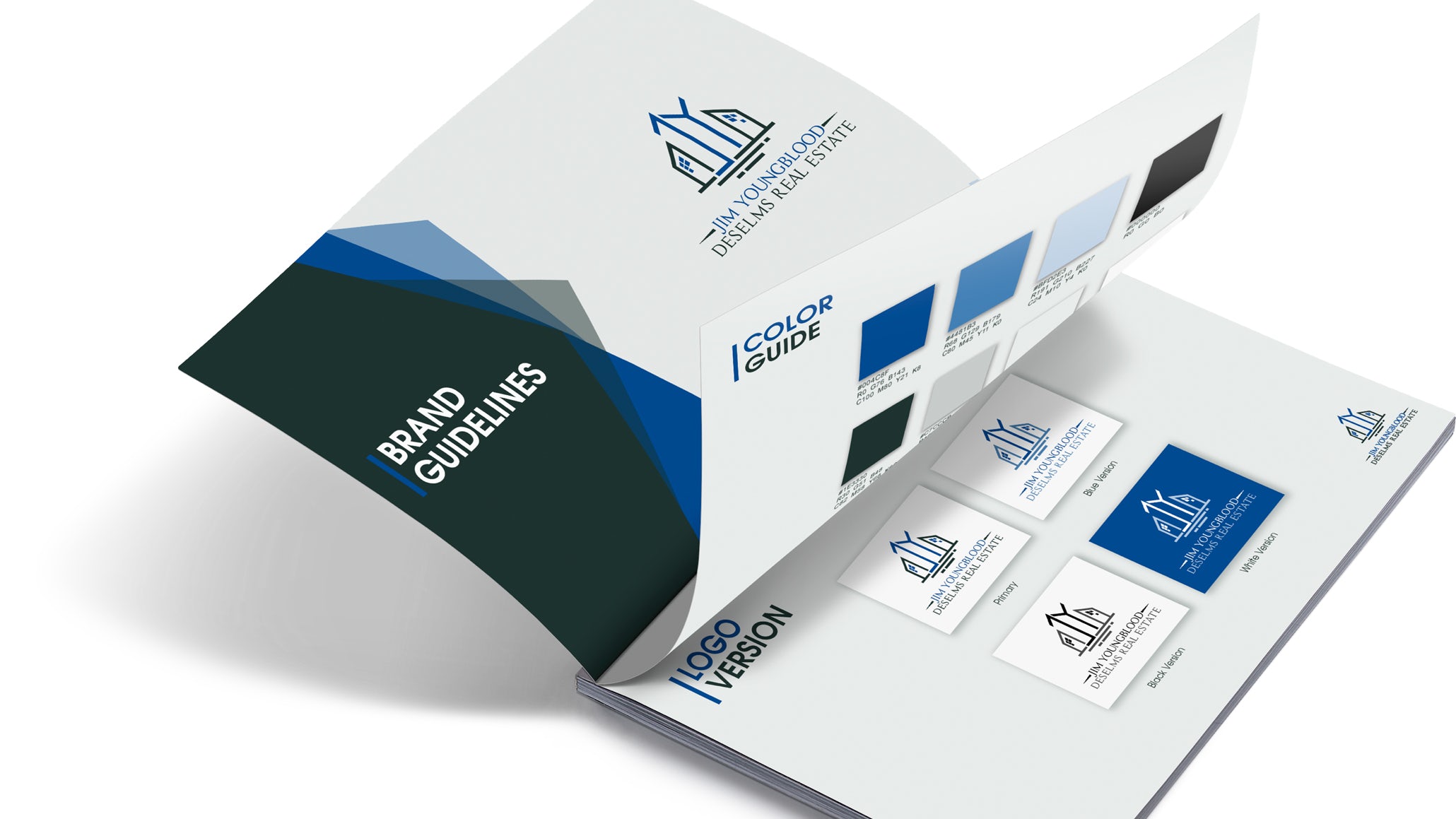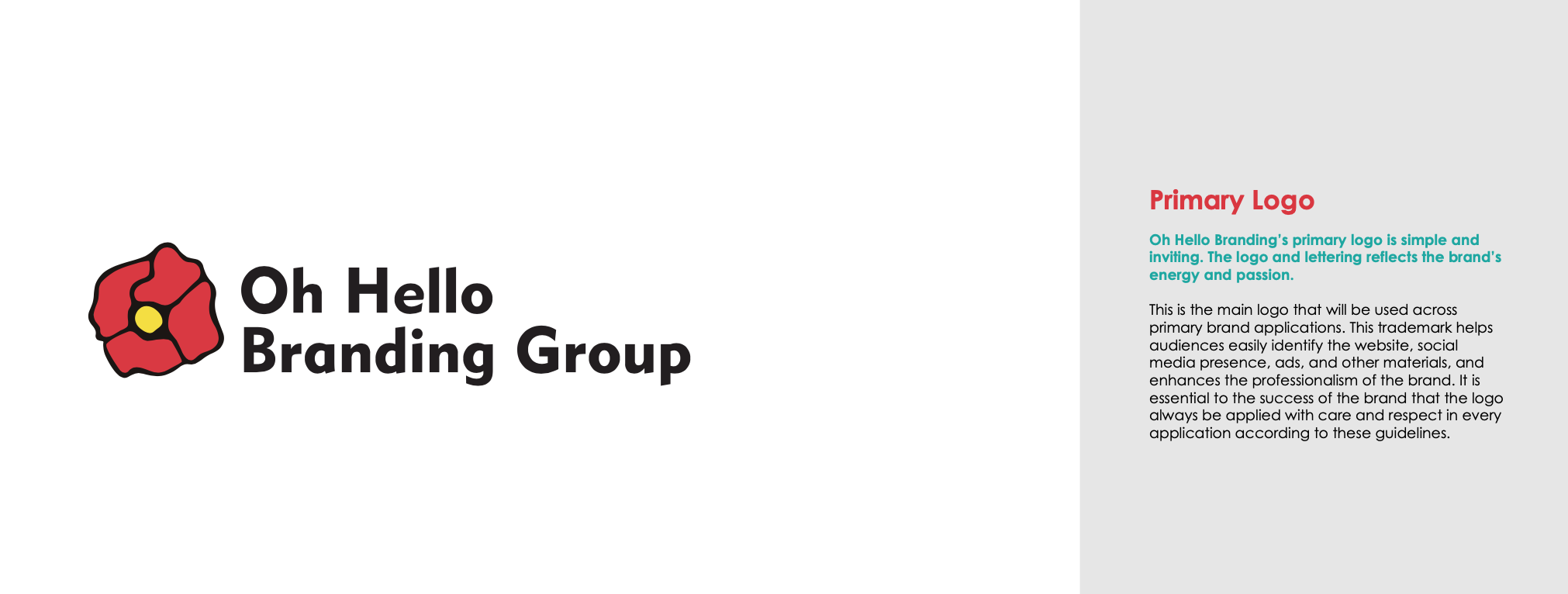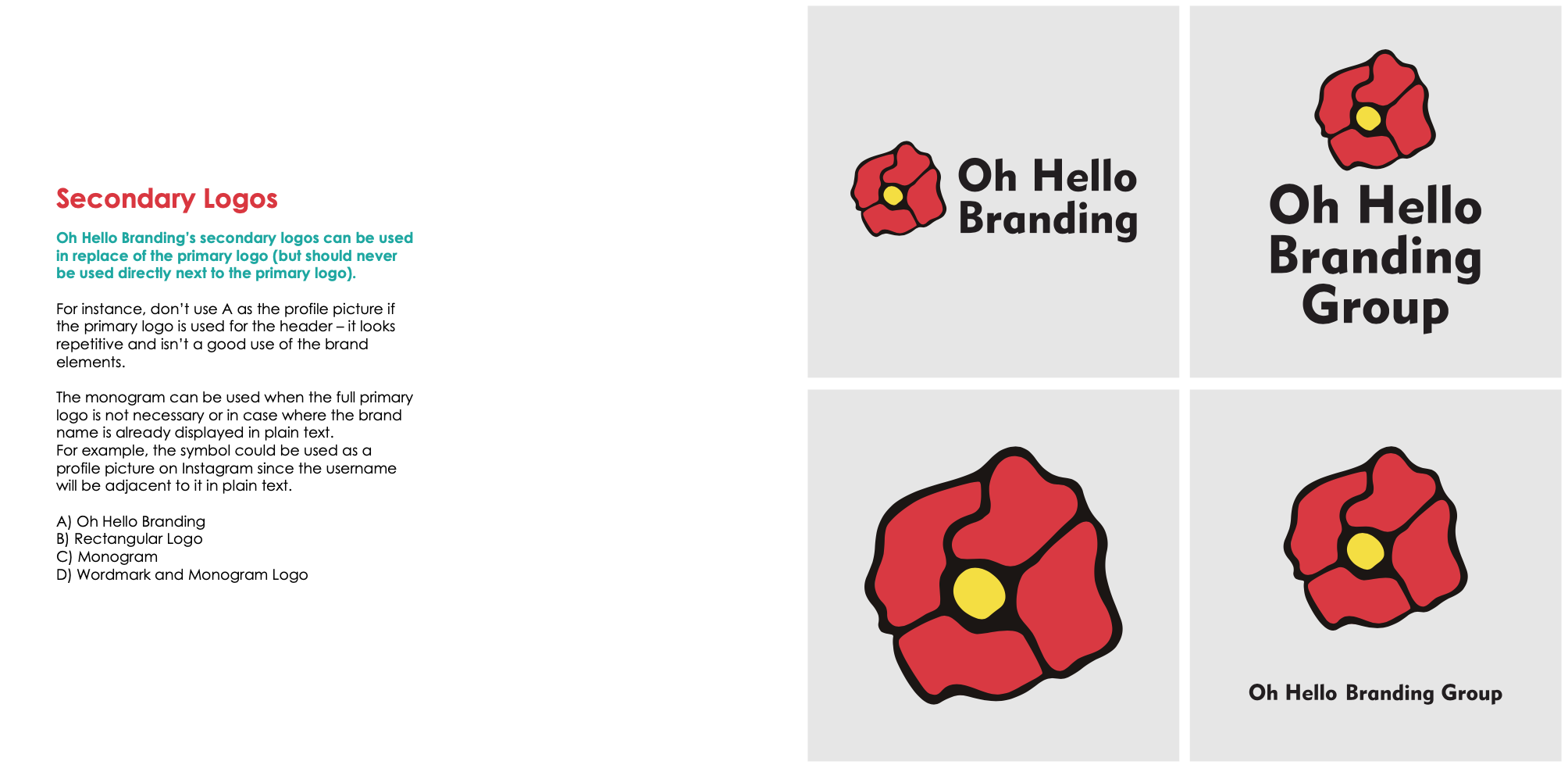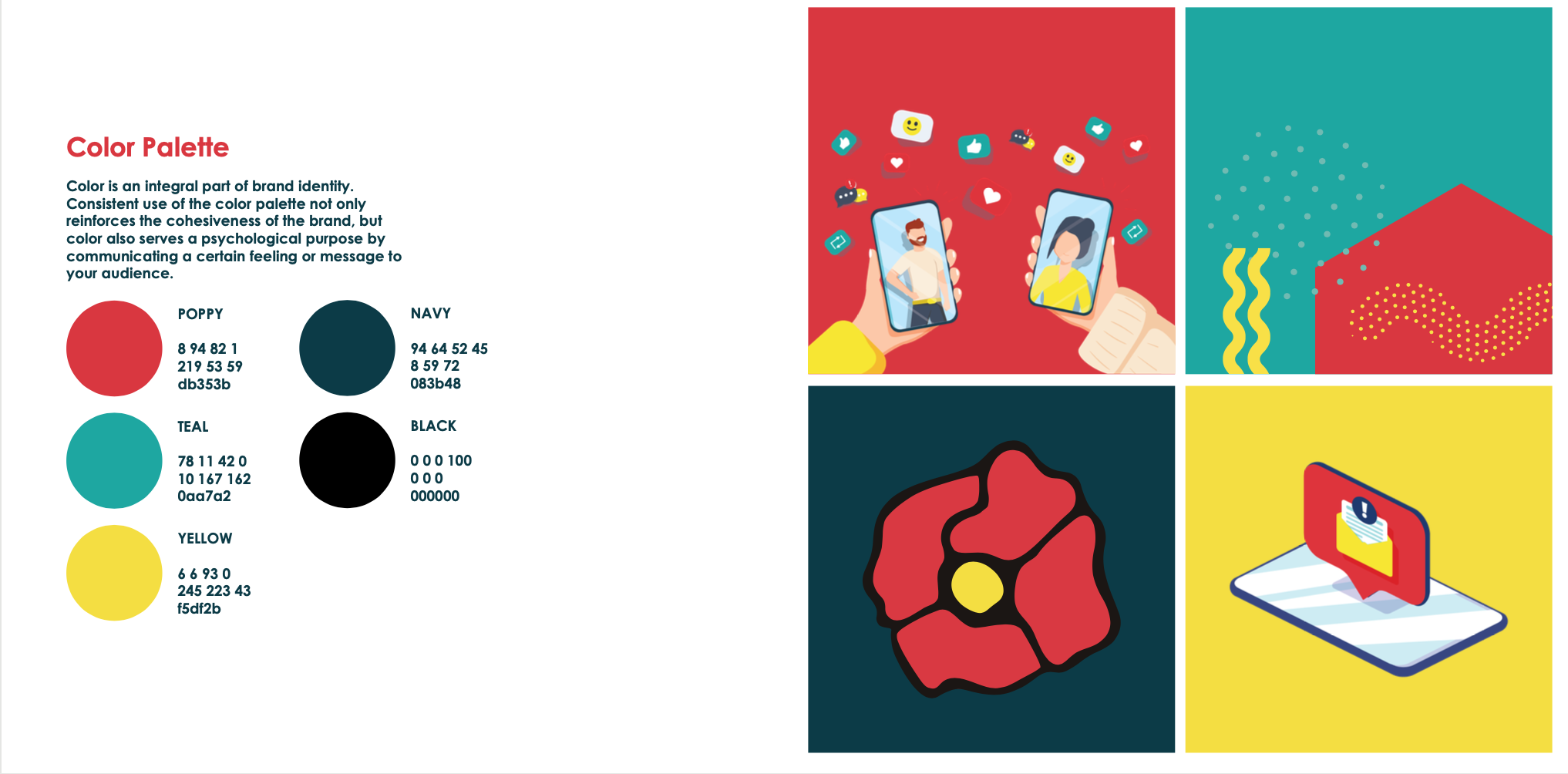Oh, Hello Branding Group
Imagine trying to cook a complicated meal without a recipe. You wouldn’t know where to start, you’d pick the wrong ingredients, and mess up the execution. Brand design guides are like the recipe to your brand to ensure you keep it consistent and differentiate it from others.
What is a brand guide?
A brand guide is a rulebook that explains and demonstrates how an organization presents itself through design. It’s a reference tool that helps maintain consistency and ensures your brand looks and feels the same across all platforms regardless of who is working on the project.

Why is it important?
Creates Consistency
Whether a customer visits your website, receives marketing material from your company, or sees your business card – they should all convey the same values, tone, and style. Brand guides set rules for your brand to follow both online and off, which communicates consistent brand identity. Consistency helps make your brand recognizable and reliable. In fact, it can actually build trust by staying consistent. Think of it like your brands personality. If someone is constantly changing how they look and act, you won’t feel like you know who they are. Inconsistency can confuse your customers which is why it’s important to set these guidelines early on.
Guides Employees
While you may know your brand like the back of your hand, you can’t expect new employees to know how everything is presented. Brand guides are a valuable tool for employees to keep your brand cohesive that they continue referencing without having someone to verbally explain it to them each time. Especially as your business grows, it’s an essential asset. It’s not just important for your direct employees either, but for freelancers, outside designers, contract workers, or outside vendors. They can all utilize the brand guide to keep your brand consistent.
Recognizable
Keeping your brand consistent will make it so much easier for customers to immediately recognize your brand. It can take a lot of time but developing a distinguishable brand and adhering to it will help your target audience remember it in the future. If your customers are searching for you on social media, they should instantly recognize your profile picture because it should match up with your brand guide. People have a short attention span; they’ll give up if they can’t find you easily. Having a recognizable brand will help speed up that process.
Shows Value
When your business has a cohesive brand identity, it increases the perceived value of your brand. Consistency in your brand makes it appear more professional and reliable. By having a brand guide, the quality and integrity of your company will go up. It’s such a simple way to show customer that your brand is legitimate, even if your company is small and just starting out.
What is included in a brand guide?
Target Audience
It’s important to define your target audience at the beginning of your brand guide because you are building your brand around them. The design choices you make should match up with what they are like and what they value. If your target audience is young children, you probably shouldn’t have a super modern, serious brand. Making it more playful and colorful will match up with the target audience better and grab their attention more.

Logos
This is one of the most important aspects of a brand guide. It should show what the primary logo is and what they secondary logos are. It also should include sizing, spacing, color usage, placement, and show examples of how not to use the logo. It’s important to be very specific in this section to ensure your logo isn’t used in the wrong way.


 Typography
Typography
Using consistent fonts is very important, even if you think your customers won’t notice. It can be a very powerful brand tool. Show the primary and secondary fonts and be specific on the rules in which it can be manipulated. For example, uppercase/lowercase, bold, italics. You can also clarify which typeface you want for specific platforms.

Color Palettes
It’s important to include the exact colors you want to use for your brand. Show your primary and secondary colors and include the RGB and CMYK color codes to ensure that your colors stay consistent between web and print formats.

We take a lot of value in brand guides here at Oh Hello Branding Group. It’s one of the first steps we take in the onboarding process with our clients because it’s so important. Need help making a brand guide for your business? We can help! Book a free consultation with us and we can create one with you.





Submit a Comment